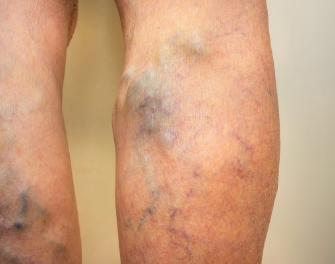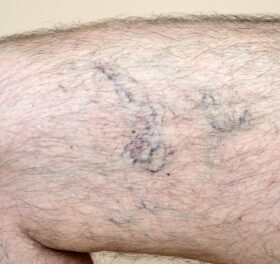Clever subtitle to add here to create interest
Brief description of what te readers will find below, like a summary of the treatment or why they sould be reading this
Leg pain is a common complaint among people, and it can be caused by a variety of factors such as injury, exercise, or even everyday activities. However, leg pain can also be a symptom of underlying heart problems, leading many to wonder if the two are related. In this article, we aim to address some of the most frequently asked questions about the relationship between leg pain, blood circulation, and heart problems.
Vein Treatment Clinic is a group of vein clinics dedicated to helping you achieve optimal vein health. We use cutting-edge diagnostic techniques to identify the root cause of leg pain and other symptoms and curate a personalized minimally invasive treatment plan to improve blood circulation to the heart. We have offices in Long Island, New York City, California, Maryland, and New Jersey. If you’re in the National Capital Region, you can find our vein center in Bethesda.
Please schedule an appointment at your nearest vein treatment clinic today.
Does leg pain indicate heart problems?
Leg pain can be a sign of both heart and vein problems. In some cases, leg pain can be a symptom of cardiovascular disease, such as peripheral artery disease, deep vein thrombosis, or even a heart attack. On the other hand, leg pain can also be caused by conditions that affect the veins in the legs, such as varicose veins or venous insufficiency. It’s essential to understand that leg pain can have multiple causes, and it’s best to consult with a vein doctor to determine the underlying cause and appropriate treatment plan. It’s always better to err on the side of caution when it comes to your health.
Can vein disease cause leg pain and leg swelling?
Yes, vein disease can cause leg pain and swelling. When the veins in the legs become damaged, blood can pool in the legs and cause discomfort and swelling. This is known as venous insufficiency and is a common cause of leg pain. Other symptoms of vein disease include fatigue, cramping, and skin changes in the legs. If left untreated, vein disease can lead to more serious complications, such as blood clots and skin ulcers. It’s important to seek medical attention if you experience leg pain and swelling, especially if it’s accompanied by other symptoms of vein disease. Early treatment can help prevent more serious complications and improve quality of life.
What is chronic venous insufficiency?
Chronic Venous Insufficiency (CVI) is a condition where the veins in the legs have difficulty returning blood to the heart, leading to pooling of blood in the legs and swelling. This can be due to factors such as damage to the veins, valve malfunction, or an increase in pressure in the veins. In healthy veins, the valves are responsible for ensuring one-way blood flow to the heart against the force of gravity. When your vein valves collapse or malfunction, blood flows backward and accumulates in the leg veins, leading to vascular dilation and the formation of spider veins and varicose veins. The condition is considered chronic because it develops over a long period and can worsen over time if left untreated.
What are the other symptoms of vein disease?
Vein disease can present with a range of symptoms, beyond just leg pain and swelling. Some common symptoms of vein disease include:
- Skin Changes: The skin on the legs may become discolored, thick, or itchy.
- Fatigue: People with vein disease may feel tired, especially after long periods of standing or sitting.
- Cramping: Muscle cramping in the legs may occur, especially after physical activity.
- Varicose Veins: Visible veins that are swollen, twisted, and may appear blue or purple.
- Restless Legs Syndrome: An uncomfortable feeling in the legs, leading to an irresistible urge to move them.
- Blood Clots: Vein disease increases the risk of developing blood clots, which can be life threatening if not treated promptly.
- Skin Ulcers: In severe cases, vein disease can lead to skin ulcers, which are open wounds that do not heal easily.
It’s important to seek medical attention if you experience any of these symptoms, as early treatment can prevent more serious complications and improve quality of life. A vein doctor can perform diagnostic tests to determine the underlying cause of the symptoms and recommend an appropriate treatment plan.
What happens if varicose veins are left untreated?
Varicose veins are a common condition where the veins in the legs become swollen, twisted, and may appear blue or purple. While varicose veins are generally not life-threatening, if left untreated, they can lead to more serious health complications. Some of the potential consequences of untreated varicose veins include:
- Leg Pain & Swelling: The accumulation of blood in the veins can lead to leg pain and swelling, especially after long periods of standing or sitting.
- Skin Changes: The skin near the varicose veins may become discolored, thick, or itchy.
- Blood Clots: Varicose veins increase the risk of developing blood clots, which can be life-threatening if not treated promptly.
- Skin Ulcers: In severe cases, varicose veins can lead to skin ulcers, which are open wounds that do not heal easily.
- Venous Stasis Dermatitis: A skin condition that occurs due to poor circulation in the legs, leading to redness, itching, and scaling.
Early treatment is essential to prevent more serious health complications and improve quality of life. A doctor can recommend an appropriate treatment plan, which may involve lifestyle changes, compression stockings, or minimally invasive vein treatments.











